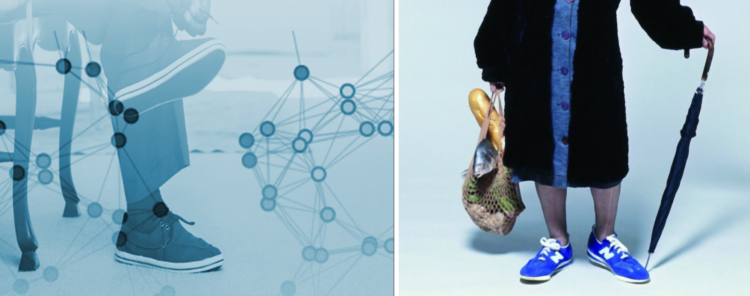Designing Smart Shoes in Fall Prevention
Jan 2022 - ongoing
Imagine you have a pair of shoes that warns you for a shuffle gait, motivates you to lift your feet higher, counts your steps to stimulate you to keep moving and warns you for fall risks in your environment.
Shoes are the ideal to place sensors because they are closely connected to the human body and are therefore integrated in the walking cycle. And fortunately, they offer enough space for sensors and batteries. There is enough evidence that measuring gait and walking patterns helps physicians and researchers to better understand the issues around falls and ageing. The challenge is to perform these measurements in real life, and to find out how the data can help us improve the health and well-being of older adults.
"Falls are one of the major causes for morbidity and mortality for older adults. In the Netherlands, each five minutes an elderly person visits a hospital emergency department, and each day 14 elderly die as a consequence of a fall"
And maybe even more importantly, how can users interact with smart shoes? What kind of feedback do they appreciate? Does this contribute to decrease fall risk or fear of falling? Does it motivate the users to walk more, to improve mobility and stamina?
In order to make our shoes and users smarter with sensors, connectivity, software and user-friendly interaction, we first need to develop a prototype to carry out measurements outside the lab, in and around the house, during a walk in a park or in a shopping center.
